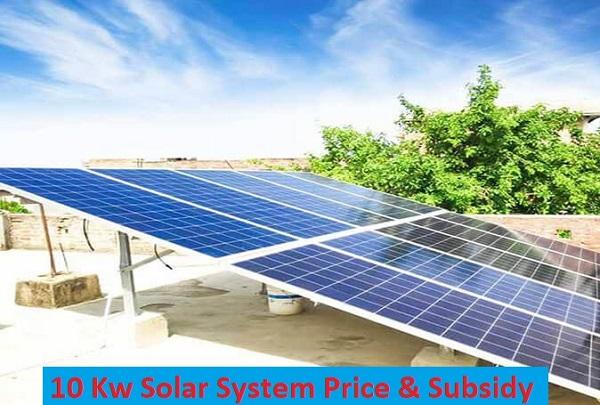
10 किलोवाट सोलर सिस्टम की कीमत और सब्सिडी
10 किलोवाट सोलर सिस्टम – आज पूरे देश में बिजली
Ujjawal Solar India’s Best Solar Company | Contact- +91-8085005100
Ujjawal Solar India’s Best Solar Company
Call – +91-8085005100
Solar panels with the highest power output currently on the market are around 400 watts. Despite this, many individuals continue to tie together several solar panels to create a solar panel 500 watt system (i.e. 5 x 100-watt solar panels = 500-watt solar). Without breaking the bank, 500 watts of solar electricity in full sun can easily charge a battery and power the electronics in your vehicle, RV, or resort in an off-grid setting.
To achieve the full capacity of a 500 watt solar panel installation, installers will use a few similar sized panels. For a 500 watt solar panel installation, five 100 watt solar panels or two 250 watt solar panels are popular options. Unless the electrical characteristics are thoroughly assessed by an expert, mixing solar panels of different wattages is not recommended for both safety and system durability.
The cost of a 500 watt solar panel ranges from 25,000 to 60,000 rupees. The cost of a 500 watt solar panel is determined by the firm that manufactures it; different companies will charge varying prices.
A 500 watt panel receiving 8 hours of sunlight each day will produce about 4 kilowatt-hours per day. We get a solar output of roughly 1460 kilowatt-hours per year if we multiply this by 365 days per year.
The solar panels that create that electricity, on the other hand, do not last indefinitely. Because the average industrial life span is 25 to 30 years, some panels put at the outset of the current boom are about to be replaced.
Solar panels capture current, which is then fed into a charge controller, which regulates how much electricity is sent to a battery. Overcharging is avoided with the use of charge controllers. They can also shut down a system if the amount of energy stored falls below 50%. DC power is stored and produced by batteries. An inverter is used to convert DC power into AC power in order to use AC equipment like microwaves, laptops, and phone chargers.
An electric circuit’s WORK is simply referred to as power. The electric circuit in this scenario is your solar panel 500 watt connected to a power inverter.
Now, energy is used to describe HOW LONG an electric circuit can perform ANY AMOUNT OF WORK.
Remember to keep that knowledge in mind. They will assist us as we progress. On a good day, your solar panel 500 watt should receive the equivalent of around 5 hours of direct sunlight—but wait! Is it really 5 hours? Hold your horses. On a typical day, the sun rises at 7 a.m. and sets at 5 p.m. That is incomprehensible.
In summary, a solar panel 500 watt produces enough energy to power a home for 5 hours every day. 2,500 watt-hours equal 500 watts multiplied by 5 hours. Solar panels are connected to a grid inverter in a residence, which is then connected to the household’s existing electrical network. You can choose from a variety of inverters in an RV, van, or boat, depending on your individual energy needs.
Let’s start with the fundamentals of solar energy generation. Solar panels with photovoltaic technology are made up of numerous silicon solar cells. When sunlight strikes the panels, an electric current is created. An electric field is created by the presence of both a positive and negative layer in a panel.
To achieve the full capacity of a 500 watt solar panel installation, installers will use a few similar sized panels. Five 100 watt solar panels or two 250 watt solar panels are popular choices for a 500 watt solar panel installation (check 100w solar panel specifications).
The 500 watt solar panel Monocrystalline 24 volts is made up of an anti-reflective glass that boosts transmissivity by 2%, allowing you to take use of all of the light that the sun emits and increasing efficiency by 2%.
According to the technologies used in the manufacturing of solar modules, two types of solar panels are available: monocrystalline solar panels and polycrystalline solar panels. It’s important to understand the differences between the two so that the cell type is appropriate for the location where the solar panel will be installed.
The 500W monocrystalline solar panel is a very efficient choice since it provides more power in less space, allowing us to increase the amount of solar power installed in the same space or keep the same amount of solar power put in less space. The 500W Monocrystalline 24 volt solar panel is simple to construct and install; with the 500W Monocrystalline 24 volt solar panel, you will have tremendous usefulness for the generation of electric power in field huts, warehouses, buildings, or ordinary residences.
The 500W Monocrystalline 24 volts solar panel is made of cutting-edge materials produced by the photovoltaic industry. It has 96 cells that are connected in a series.
A solar panel 150 watt can easily power the bulk of your low- to medium-power gadgets, such as camp lights, torches, and rechargeable batteries, especially if they are LED lights and torches. These are believed to last significantly longer than ordinary bulbs and require very little energy from your solar panel batteries.
The solar panel 150 watt is built of very high-quality wire and mounting gear, and it can work in any weather condition. It is composed of tempered glass and features crystalline solar cells with a high efficiency.
Monocrystalline solar cells are used in this 150 watt solar panel (A-class). The solar panel is extremely powerful, making it ideal for charging batteries and solar generators on a boat, gazebo, or when camping. It is weatherproof and watertight, so it can be permanently installed.
The universal MC4 output of the 150 W solar panel. The solar panel can create an average of 650 Wh of energy per day using this output. This energy can be stored in a solar generator or 12V/24V lead-acid batteries (in combination with a charge controller). You may then use the solar energy created to power or charge your electronics. The efficiency of monocrystalline solar cells is +/- 18 percent.
The solar panel 150 watt is perfect for solar home lighting, small solar inverters, pumping systems, off-grid applications, navigational lights, traffic signals, and signalling, with a 150 watt equivalent to 12-volts DC output. This solar panel 150 watt is a fantastic solution if poor light is an issue at your installation site.
A 150 watt solar panel takes 4 days to fully charge and produces maximum power of 150 watts with a 5% power tolerance. Even in overcast conditions, this solar panel performs admirably.
It’s a high-efficiency solar panel that works well, and you can get it readily online.
The cost of a 150 watt solar panel ranges from 4500 rupees to 7500 rupees. The pricing discrepancy is related to the diverse products that each company offers. If you want a luminous solar panel, a 150 watt solar panel will set you back roughly 5700 Rs.
At the low end, a 150 watt solar panel from Vikram Solar will set you back 4500 Rs, while a 150 watt solar panel from Tata Solar will set you back 7250 Rs. This is due to the fact that the larger the firm’s name, the higher the quality of goods given by the company.
Solar panels have become increasingly popular in India in recent years as people discover how cost-effective and environmentally friendly they can be over time. Solar panels with a power output of 300 watts or more are used by almost all Indian residences and businesses. Choosing the right solar panel for your solar system can take some time, especially if you’re on a budget.
A 300 watt solar panel might be able to deliver the same amount of power as a 300-watt battery. Experts favor 12-volt batteries because they store energy efficiently and can be reused later. Even the equipment you use should be 12 volts to match the battery voltage. The efficiency and benefits of solar panels can only be maximized in this manner.
The technology used in a 300 watt solar panel, such as monocrystalline or polycrystalline, also influences the pricing. The former is 18-25 percent efficient, whereas the latter is only 17-20 percent efficient. The type of solar panel and the brand from which it is purchased affect the cost of a 300-watt solar panel. The majority of these solar panels are available for around Rs. 8000 in India.
The cost of a 300 watt solar panel ranges from 7200 to 8800 rupees. Solar panels are manufactured by a number of companies in India. In India, the cost of a 300 watt solar panel varies per company. At a minimum, Vikram Solar offers a 300 watt solar panel for 7200 Rs, while at a maximum, a prominent company like Tata offers a solar panel for 8800 Rs. Luminous also sells a 300-watt solar panel for roughly 8200 rupees. There are many other manufacturers as well, but the prices are nearly identical.
A 300 watt solar panel receiving 8 hours of sunlight every day will produce approximately 2.5 kilowatt-hours per day. If we multiply this by 365 days per year, we may have a solar output of around 900 kilowatt-hours each year. Each solar panel will generate 900 kilowatt-hours each year in a nutshell.
Even in the most extreme situations, a solar panel 300 watts can power a wide range of appliances and devices, including laptops, LED lights, speakers, and televisions.
To get an exact estimate of what you can and can’t power with a single 300 watt solar panel, you’ll need to compare the output per day or month (say 2.5 kWh/day for the solar panel) with the needs of an item.
Each solar panel comes with a label that specifies the maximum electricity production in watts. Wattages are assigned to each panel based on its peak capability for generating energy in laboratories under ideal conditions, also known as STC (Standard Test Conditions). However, in the actual world, you might expect a performance drop, often known as PTC.
The amount of sunshine the panel receives and your location will affect the output. However, the energy output is not always consistent throughout the day, even during daylight hours. In the mornings or late afternoons (when the sun is low in the sky), they will generate less than in the mid-afternoon, when the sun is high in the sky.
The average sun radiation in Los Angeles, for example, is 5.84.
You would multiply 5.84 x 0.3 = 1.752 kWh per day to figure out how much power a 300-watt panel produces.
Multiply the following figure by the number of panels to get the total amount of power generated by a solar array.
Solar panels have gained popularity in India in recent years as people realize how cost-effective and ecologically friendly they can be in the long run. 300 watt solar panel having a power output of 300 watts or more are used by the majority of Indian residences and businesses. Selecting the right solar panel for your solar system can be a time-consuming process, especially if you’re on a tight budget.
A 300 watt solar panel might be able to deliver the same amount of power as a 300-watt battery. Experts favor 12-volt batteries because they store energy efficiently and can be reused later. Even the equipment you use should be 12 volts to match the battery voltage.
Let’s start with the fundamentals of solar energy generation. Solar panels with photovoltaic technology are made up of numerous silicon solar cells. When sunlight strikes the panels, an electric current is created. An electric field is created by the presence of both a positive and negative layer in a panel.
Solar panels capture current, which is then fed into a charge controller, which regulates how much electricity is sent to a battery. Overcharging is avoided with the use of charge controllers. They can also shut down a system if the amount of energy stored falls below 50%. DC power is stored and produced by batteries. An inverter is used to convert DC power into AC power in order to use AC equipment like microwaves, laptops, and phone chargers.
Solar panels are connected to a grid inverter in a residence, which is then connected to the household’s existing electrical network. You can choose from a variety of inverters in an RV, van, or boat, depending on your individual energy needs.
Solar panels are frequently seen as large-scale projects. This is because solar energy has the potential to power an entire home. A single 250 watt solar panel, on the other hand, can be sufficient for a range of jobs. Solar panels with a 250-watt capacity are becoming more popular. In a variety of conditions, their maximal solar energy power can be put to good use.
The benefits of solar panels with a wattage of 250 watts are significantly greater than their low wattage suggests.
Solar panel prices are determined by the capacity, technology, and manufacturer of the panels. The capacity and technology of a solar panel are always determining factors in its price. Solar panels ranging in size from 10 watts to 20 watts, 40 watts to 50 watts, 75 watts to 100 watts, 180 watts to 440 watts, as well as shark bi-facial solar panels, can be placed. A high-quality solar panel costs between 40 and 85 rupees per watt.
With 150 solar panel manufacturers, a manufacturing capacity of 10 GW, and a projected installation capacity of 35 GW by 2020, India is the world’s third-largest market for solar modules.
In India, the cost of a 250 watt solar panel ranges from Rs 6000 to Rs 8500. One can choose whatever solar panel they want and which solar panel they can afford based on their budget. Vikram Solar offers a 250 watt solar panel for Rs 6000, whereas Tata Solar offers the most expensive solar panel for Rs 8500. A 250 watt solar panel is available from Luminous, a top firm in the solar system business, for roughly 8000 Rs. There are several different companies that provide solar panels, such as Havells and Loom.
The cell configuration (60 cells, 72 cells) and wattage of a solar panel determine the physical size and weight of the solar panel. Before we get into the size of solar panels, it’s important to understand how they’re made. Solar panels are typically made up of solar cells that are placed in rows and columns to make a solar panel. The greater the number of solar cells, the larger the solar panel and consequently the heavier it is.
The normal size of a 250 Watt solar panel having 60 cell, whether monocrystalline or polycrystalline, is 39 inch X 66 inch (3.25 ft X 5.5 ft), and the weight is roughly 19 kg.
Whereas, in comparison to 250 watt solar panel a 320 watt 72 cell solar panel is 39 inches by 77 inches (3.25 feet by 6.42 feet), and a 300 watt 72 cell solar panel weighs roughly 25 kg.
A solar cell’s normal size is 156 mm X 156 mm (approx. 6 inch X 6 inch).
The cell configuration for a 60 cell solar panel is 6 X 10 (6 columns and 10 rows), whereas the cell arrangement for a 72 cell solar panel is 6 X 12. (6 columns and 12 rows).
So, to figure out how much rooftop space you’ll need for solar panels, apply the formula below.
Total number of solar panels x area of one panel = total area required for solar panels
For example, a 7.5 kW system includes 23 320 watt solar panels, implying that the space required to install 7.5 kW of solar panels is,
Solar panel area for 7.5 kW = 23 x 21.50 = 495 sq.ft
This is the space required to install all of the solar panels back to back and side by side.

10 किलोवाट सोलर सिस्टम – आज पूरे देश में बिजली
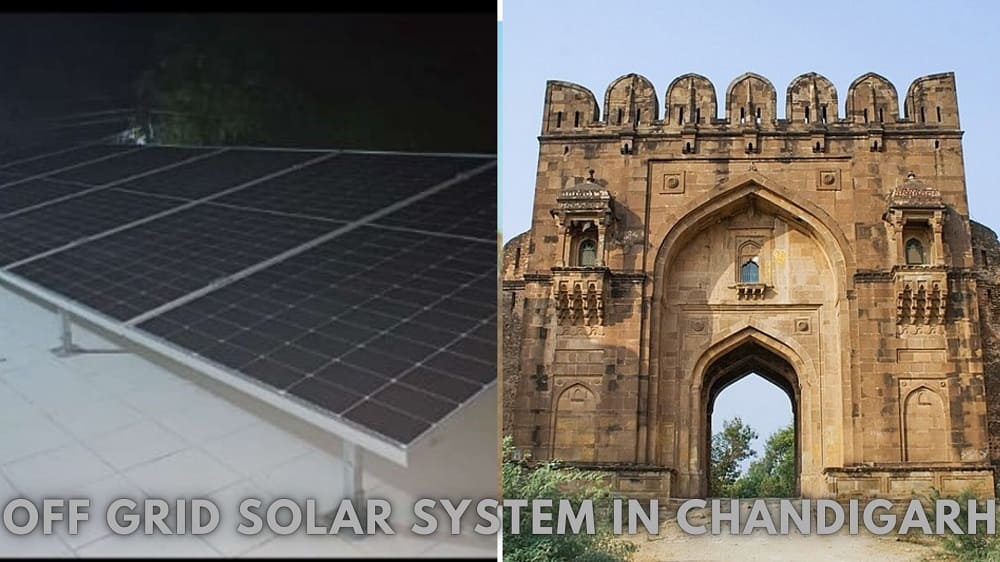
Off Grid Solar System in Chandigarh- Chandigarh is a union

Solar Panel For Home In Rajkot – Solar energy in
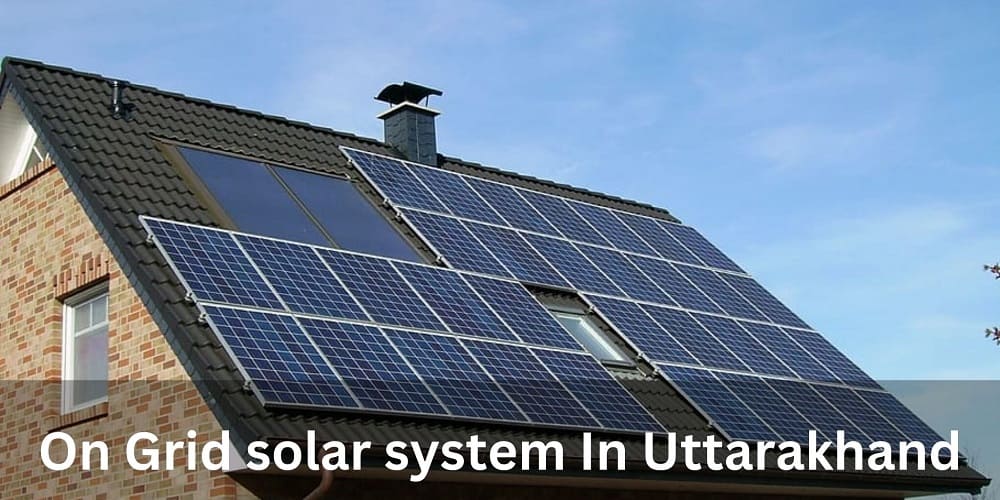
On Grid Solar System Uttarakhand – Grid-connected solar photovoltaic (PV)
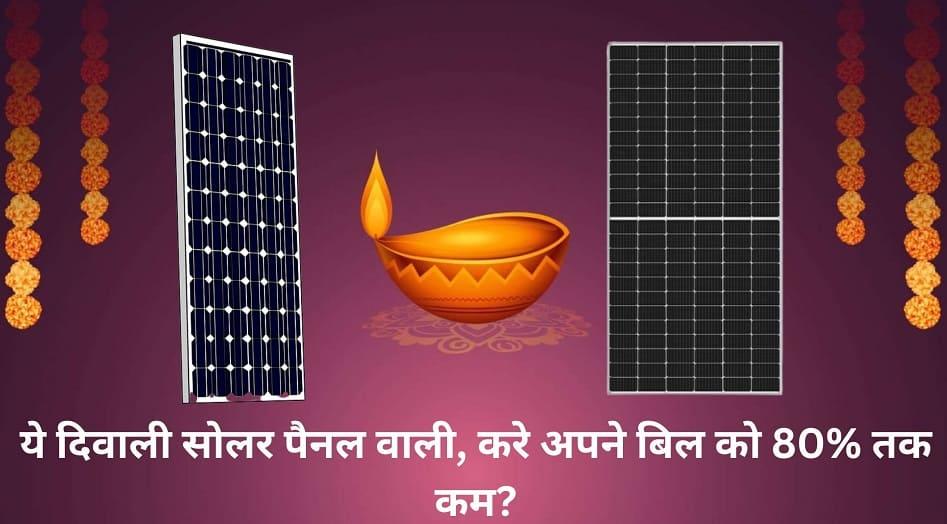
Solar Panel Installation at Diwali – इस दिवाली के मौके
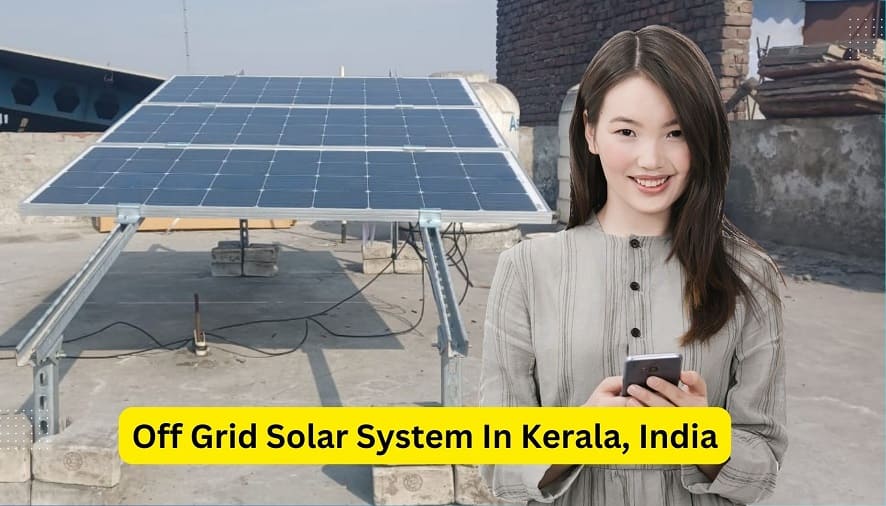
Off Grid Solar System in Kerala- In today’s time, the
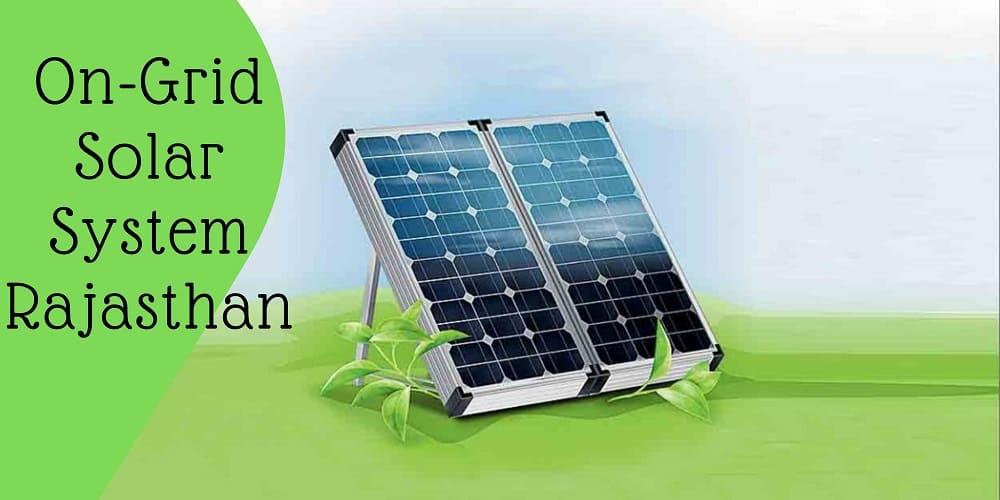
On Grid Solar System In Rajasthan – Rajasthan is one
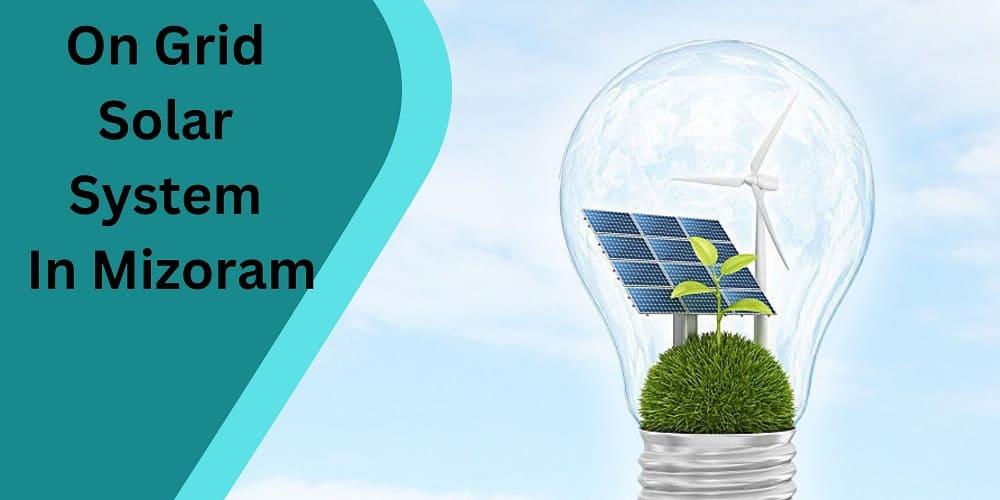
On Grid Solar System In Mizoram – Mizoram is an
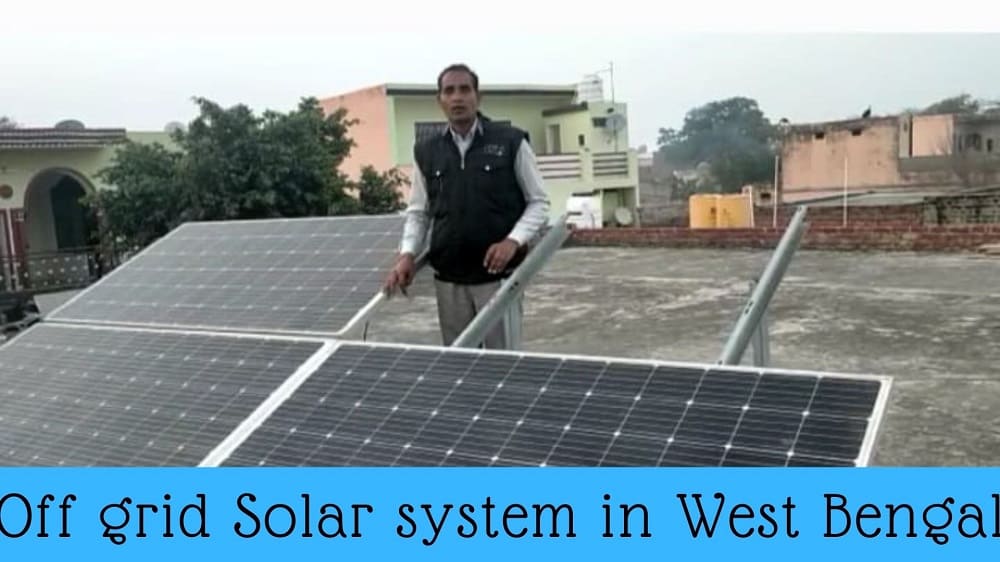
Off Grid Solar System in West Bengal- In today’s time,
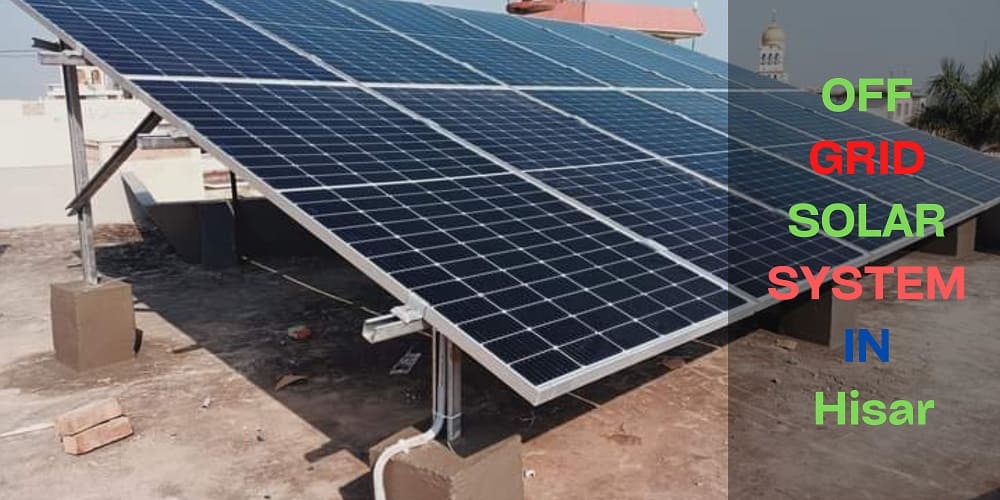
Off Grid Solar System in Hisar- In today’s time, the
Ujjawal Solar is a Solar Energy Company led and initiated by the students of the YMCA. We are India’s largest Mono PERC Solar modules manufacturer at PAN India Level. We Manufacture completely Eco-Friendly Modules that give no harm to the environment. We want to make India aware of the power of the Sun by reducing up to 90% of their home’s electricity bills.